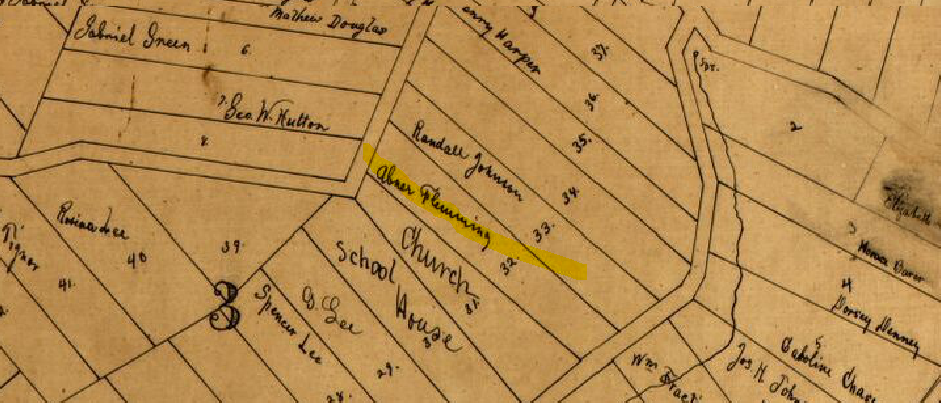
Above is the full map. Below is a close-up showing the name "Abner Flemming" on an original plot from the year 1867. Beside his name is a plot with the name Randall Johnson. As we shall see later, Randall Johnson was a close friend of Abner Flemming and appears to have been his brother- in-law. We also see a Milton Johnson closely associated with Abner, who is slightly younger than Randall. We believe they are brothers. Freedman's Bureau records indicate that all three came out of Caroline County, Va., fleeing from slavery no doubt.
The plots are bounded by Douglass Ave (now Douglass Place) to the north and Pomeroy Ave to the south. A link to the map and the website from which it came is here.

Close-up
f
As mentioned earlier, many enslaved people fled from slavery to Union Army camps. At the camps they basically found protection and were termed "contraband". They were allowed into Union camps because they were considered property or resources that the South could use against the North. Therefore they were contraband of the South that could be seized by the North. This concept originally thought of and engineered by a Union officer, gave slaves much motivation to flee slavery and find relative safety at Union camps. Most likely Dabney, Randall, and others related to them were of the many that fled the south and slavery to find refuge among Union encampments or Union-held territory. It appears that Dabney fled Caroline County Virginia shortly after the start of the Civil war.
Civil War Draft records show that Dabney (spelled Debney in the records) registered in D.C. for the Civil War draft of 1863. It shows him as being a black ("Col'd) laborer originally from Virginia. Yes, somehow, he made it from Caroline County Va. to the District of Columbia by 1863, most likely, crossing the Rappahannock river as depicted in a famous photo, where actual former slaves were photographed crossing this river. Who knows? Dabney may even be in this photo :-) (see below).
At the time of this draft registration, he was not living in Barry Farm, but "Rear of F-St." (See below). This would go congruent with the fact that the Farm was not purchased until after 1867.
It also appears that though he registered in the draft, he did not serve, but was exempted, as a report in the September 15, 1863 Evening Star newspaper indicates, because he was the "only parent of children" (see below).


Former slaves crossing the Rappahannock to freedom.





